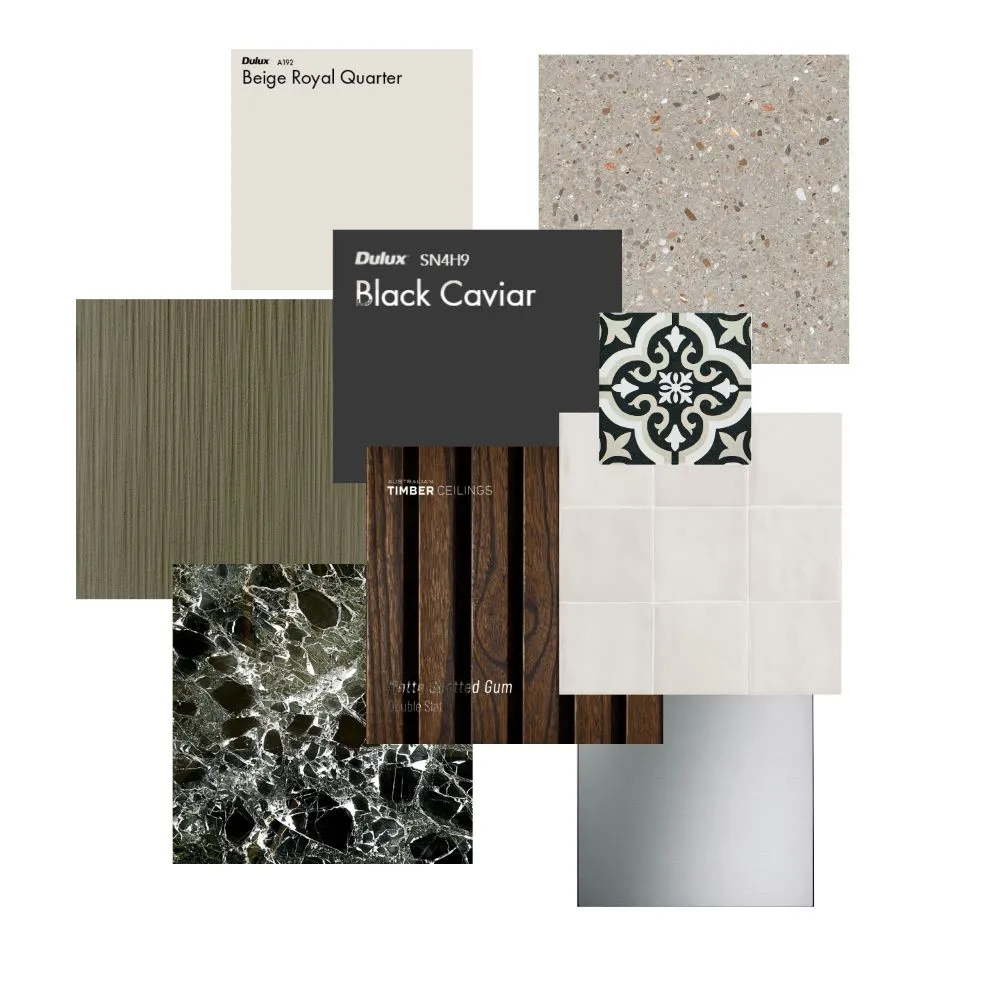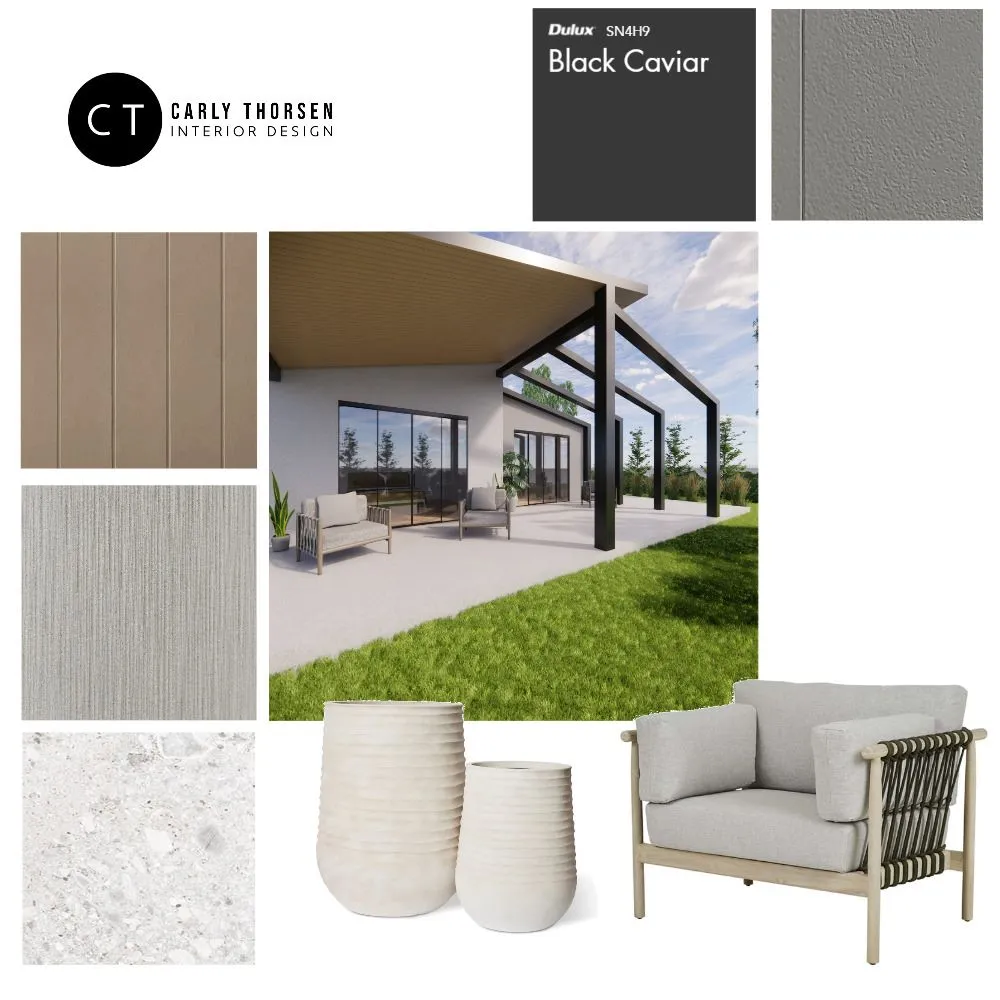Ideas
10 Types of Exterior Wall Cladding | A Complete Guide for Your Next Project
Building a house or renovating your home can be an exciting project, but there’s also a lot to consider. From designing the layout to choosing the right fixtures and fittings, every aspect is important. And if there’s one crucial component to both the aesthetics and functional protection of your home, it’s exterior wall cladding.
We’ve put together a comprehensive guide that delves into the world of exterior wall cladding by exploring 10 diverse types to enhance your home’s façade. From traditional brick to innovative materials, we’re covering a range of options perfect for every type of architectural style, climate, and design preference. So, come with us to discover the complete guide to exterior wall cladding for your next project.
 Image credit: SMUB Studio | Rex Whiticker
Image credit: SMUB Studio | Rex Whiticker
What is Exterior Cladding?
Before we dive in, it’s crucial to under just what exterior cladding is and how you can utilise it in your home. Exterior cladding involves applying a layer of material over the exterior walls of a building. This serves multiple purposes including protecting your home from weather elements, enhancing thermal insulation, and significantly contributing to the aesthetics of the structure. Cladding comes in various materials, each with unique properties and visual appeal.
Discover more external cladding solutions in our product library.
 Image credit: Talm Beach House | Teresa from Muse Photography
Image credit: Talm Beach House | Teresa from Muse Photography
1. Vertical Cladding
Vertical cladding is an incredibly popular choice because, as the name suggests, the cladding panels are installed in a vertical orientation to create the illusion of height. Vertical cladding is perfect for a wide range of styles, but we particularly love this look on contemporary homes as it feels sleek and sophisticated. Vertical cladding is also a versatile choice as it comes in a range of materials, widths, and colours.
View more vertical cladding solutions in our product library.
2. Brick Cladding
Brick cladding offers a classic, timeless appeal to your home. Plus, it’s highly durable, low maintenance, and it provides excellent insulation - it’s a win-win! Brick cladding also comes in a huge variety of colours, textures, and sustainable materials, allowing for creative design flexibility. It’s a perfect blend of traditional aesthetics with modern building techniques that we absolutely love.
 Image credit: Brickworks | River Haus
Image credit: Brickworks | River Haus
3. Stone Cladding
Stone cladding adds a touch of organicness to your façade through its natural beauty and sense of robustness. This super versatile solution ranges from rustic to polished finishes with a wide variety of colours and tones.
Notably, sandstone cladding is a popular choice due to its unique texture and durability, it’s perfect for adding those luxury coastal vibes to any home.
If you’re looking for inspiration for creating your dream facade, we sat down with some incredible designers who gave us all the tips and tricks for every architectural style.
 Mood board by Five Files Design Studio on Style Sourcebook. View mood board here.
Mood board by Five Files Design Studio on Style Sourcebook. View mood board here.
 Mood board by Project Four Interiors on Style Sourcebook. View mood board here.
Mood board by Project Four Interiors on Style Sourcebook. View mood board here.
4. Timber Cladding
Timber cladding is popular in homes around Australia for its natural, warm aesthetic. This versatile option is environmentally friendly and, if properly maintained, can be quite durable as well. We also love timber cladding for its uniqueness, as no two pieces are alike with it’s varying hues and grain patterns. Timber cladding is perfect for modern, coastal or minimalist style homes.
 Image credit: The Designory | The Quarter Acre
Image credit: The Designory | The Quarter Acre
 Image credit: The Designory | The Quarter Acre
Image credit: The Designory | The Quarter Acre
5. Metal Cladding
If you’re looking for something low-maintenance and sustainable, look no further than metal cladding. Metal materials, such as steel, are known for their sleek, modern appearance and durability. It’s lightweight, recyclable, and perfect for all different types of climates around Australia. Available in so many different colours, finishes, and styles, metal cladding is ideal for any home, no matter the architectural style.
 Mood board by Clementine Atanazio on Style Sourcebook. View mood board here.
Mood board by Clementine Atanazio on Style Sourcebook. View mood board here.
 Mood board by Jas and Jac on Style Sourcebook. View mood board here.
Mood board by Jas and Jac on Style Sourcebook. View mood board here.
6. Weatherboard
We’re sure you’re familiar with the ever-so-popular cladding solution, weatherboards. This type of cladding was traditionally made from timber, but it now comes in a wide variety of materials, such as fibre cement. Weatherboard cladding is characterised by its overlapping boards, which help to protect your home from harsh weather conditions.
Weatherboards are loved all around Australia but are more commonly found in Victoria and Queensland on homes that are aiming for that modern coastal aesthetic.
 Image credit: @projectcoastal | Knezz
Image credit: @projectcoastal | Knezz
7. Concrete Cladding
Turning to something a little more industrial now is concrete cladding. Concrete cladding is celebrated for its strength and minimalist appearance. It offers a modern, industrial look and is highly durable against environmental elements. This type of cladding is often found in contemporary urban designs.
 Mood board by Michelle Ifield on Style Sourcebook. View mood board here.
Mood board by Michelle Ifield on Style Sourcebook. View mood board here.
 Mood board by Carly Thorsen Interior Design on Style Sourcebook. View mood board here.
Mood board by Carly Thorsen Interior Design on Style Sourcebook. View mood board here.
8. Render
Render is a type of cladding applied as a thick coating, made from a mixture of sand, cement, and water. It’s an incredibly versatile solution as it can be painted in various colours and is ideal for achieving a smooth or textured finish on external walls.
 Image credit: Casablanca Creative | Kristian VanDerBeek
Image credit: Casablanca Creative | Kristian VanDerBeek
 Image credit: Casablanca Creative | Kristian VanDerBeek
Image credit: Casablanca Creative | Kristian VanDerBeek
9. Fibre Cement Cladding
While we’re on the topic, fibre cement isn’t just a material limited to weatherboard styles. Developed by James Hardie in the early 1980s, fibre cement cladding was created as an alternative, asbestos-free building product. It’s a durable product, resistant to harsh weather conditions and pests, making them a low-maintenance option for projects. Products, like in the Axon™ Cladding range, are both visually interesting and functional.
Learn more about the history and benefits of fibre cement with James Hardie.
 Mood board by Gaylene Drew Designs on Style Sourcebook. View mood board here.
Mood board by Gaylene Drew Designs on Style Sourcebook. View mood board here.
 Mood board by The Cottage Collector on Style Sourcebook. View mood board here.
Mood board by The Cottage Collector on Style Sourcebook. View mood board here.
10. Aluminium Cladding
Aluminium cladding stands out for its lightweight properties, corrosion resistance, and flexibility in design. Used in conjunction with other claddings, aluminium cladding is often installed as a feature piece to the exterior of homes.
 Image credit: Kat Fola Design | Jack Gibson
Image credit: Kat Fola Design | Jack Gibson
Choosing the right exterior wall cladding is crucial in defining the character and functionality of your home Each type offers unique benefits, from durability and insulation to unique aesthetics. Whether you prefer the natural luxury of stone or the contemporary flair of steel, there's a cladding option to suit your project. We hope this guide has helped simplify your decision-making process. Don’t forget to pop your vision onto canvas using our mood board tool, and send through your completed project for a chance to be featured. We can’t wait to see your completed project!
 Image credit: SMUB Studio | Rex Whiticker
Image credit: SMUB Studio | Rex Whiticker
 Image credit: SMUB Studio | Rex Whiticker
Image credit: SMUB Studio | Rex Whiticker
Frequently Asked Questions
The best exterior cladding, which types should you avoid, and the best low-maintenance option can vary based on several factors including climate, aesthetic preferences, budget, and maintenance capabilities. Let’s dive into popular questions on exterior wall cladding:
What is the Best Exterior Cladding?
The “best” exterior cladding solutions depend entirely on your home’s aesthetic, location, and budget. However, we’ve summarised a few popular choices to help you decide:
Brick Cladding: Known for its durability and timeless appeal.
Metal Cladding (such as steel): Favoured for its modern look and low maintenance.
Stone Cladding: Offers a natural and elegant appearance, with sandstone being a particularly popular option.
Timber Cladding: Ideal for a natural, warm aesthetic, but requires more maintenance.
Fibre Cement Cladding: A versatile and durable option that can mimic other materials like wood or stone.
What is the Best Low Maintenance Cladding?
For low-maintenance cladding solutions, consider:
Metal Cladding: Steel cladding is durable and requires little upkeep.
Fibre Cement Cladding: Mimics the look of more high-maintenance materials but requires far less upkeep.
Brick Cladding: Requires little maintenance and is highly durable.
What Cladding Should You Avoid?
Cladding solutions to avoid also depend on your home’s specifications. What works best for one style, won't work for another. And it’s important to also consider your climate and location. To help, we’ve summarised some key factors to consider:
Materials Not Suited to Your Climate: For example, certain woods may not fare well in very humid or rainy climates unless properly treated.
Low-Quality Materials: These might be less expensive initially but can lead to higher costs in the long run due to maintenance, repairs, or even replacement.
Non-Fire Resistant Materials: In fire-prone areas, it's crucial to choose fire-resistant cladding.
Materials with High Maintenance Needs: If you're not able to commit to the required upkeep.
What Goes Behind Cladding?
Wall Wrap: This is crucial to prevent water infiltration into the building structure.
Insulation: To improve your home’s thermal efficiency.
A Ventilated Air Gap: Allows for moisture to escape and air to circulate, preventing dampness and mould growth.
Framing: Cladding is secured to the home’s structure.
Each type of cladding and the materials used behind it can vary based on the specific requirements of the building and the chosen cladding material. Always consider local building codes and regulations when selecting and installing exterior cladding.





